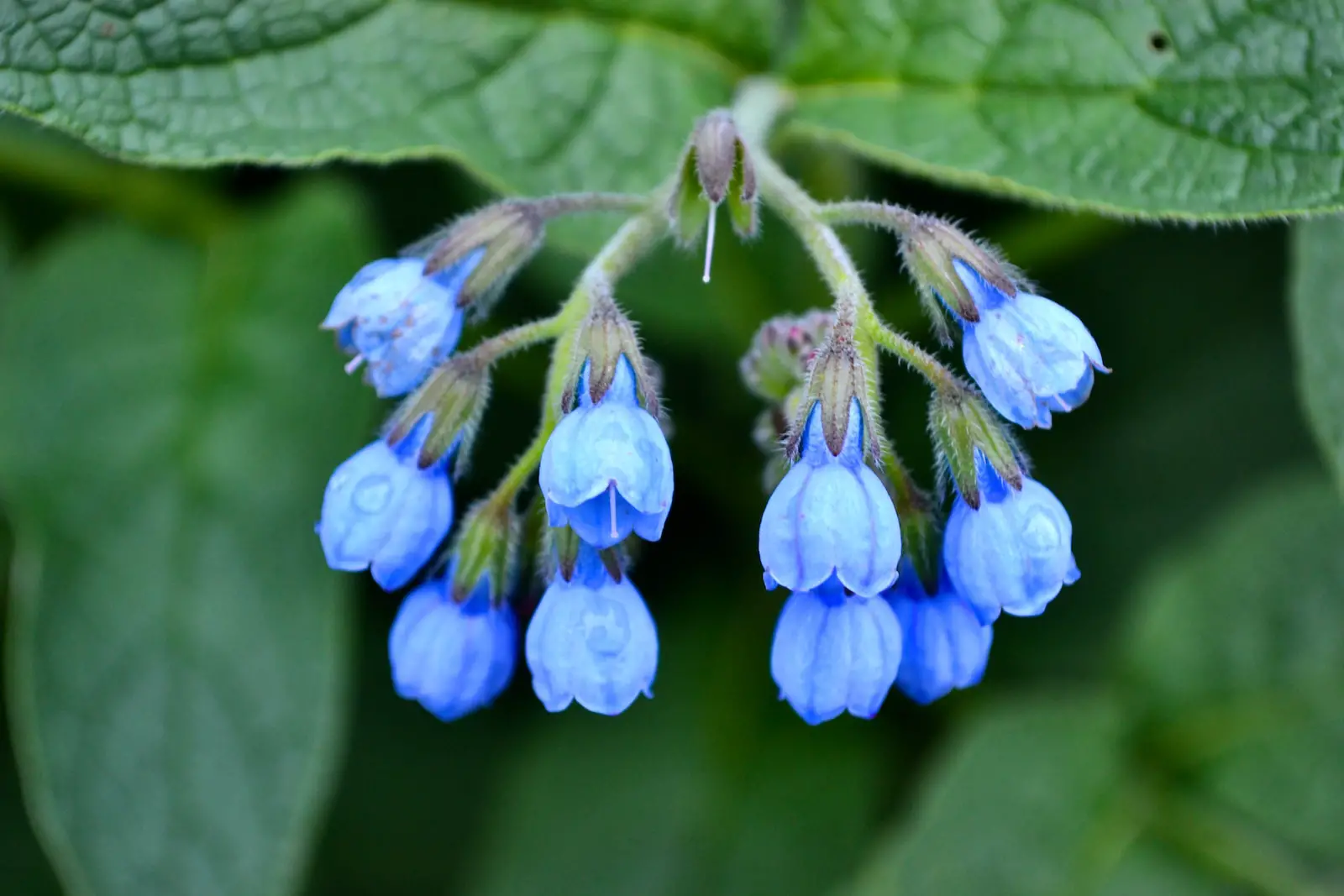Comfrey, a herbaceous perennial plant, has long been cultivated for both its medicinal properties and its value in organic gardening. With large, hairy leaves and small, bell-shaped flowers, Comfrey has been used traditionally to treat various ailments, from bone fractures to inflammation. Its deep roots make it a dynamic accumulator, pulling nutrients from deep in the soil and making them available to other plants.
Despite its many benefits, Comfrey also has its share of controversy, particularly surrounding its internal use. Certain species contain compounds that may be harmful to the liver when ingested in large quantities. Therefore, its internal use has been restricted in some countries.
Comfrey’s utility in the garden is highly regarded by organic gardeners. As a compost activator and a valuable component in mulches and liquid feeds, Comfrey has much to offer to the sustainable cultivation practices. It’s a favorite among permaculture enthusiasts and can be a vital part of an ecological garden.
| Attribute | Details |
|---|---|
| Common Names | Comfrey, Blackwort, Knitbone |
| Botanical Name | Symphytum officinale |
| Family | Boraginaceae |
| Plant Type | Perennial |
| Mature Size | 2-3.5 feet tall |
| Sun Exposure | Full Sun to Partial Shade |
| Soil Type | Well-Drained, Rich |
| Hardiness Zones | 4-9 |
| Native Area | Europe, Asia |
Comfrey Care
Comfrey is a robust plant that can thrive in a wide range of conditions. Once established, it requires very little care. However, due to its rapid growth and spreading habit, it’s essential to give Comfrey a suitable spot where it won’t become invasive.
Planting Comfrey near fruit trees or other nutrient-hungry plants can be beneficial, as it brings up nutrients from deep in the ground. Regular cutting of the leaves, which can be used for mulching or making liquid feeds, helps to manage its growth and take advantage of its nutrient-rich foliage.
Light Requirement for Comfrey
Comfrey does well in full sun to partial shade. While it can grow in various light conditions, providing at least partial sunlight will ensure healthy growth and abundant foliage.
Soil Requirements for Comfrey
Comfrey prefers well-drained, rich soil. It can tolerate a variety of soil types but thrives in a soil rich in organic matter. Regular addition of compost or well-rotted manure can improve soil structure and fertility.
Water Requirements for Comfrey
Comfrey’s deep roots allow it to access moisture far beneath the surface, making it fairly drought-resistant. Regular watering during dry spells is still recommended, especially in the first year as the plant establishes.
Temperature and Humidity
Comfrey is hardy in zones 4-9 and can tolerate a wide range of temperatures. It is not very sensitive to humidity, making it a versatile plant for different climates.
Fertilizer
Comfrey rarely needs additional fertilization, as its deep roots access nutrients from the soil. If soil is particularly poor, an occasional application of a balanced fertilizer may be beneficial.
Pruning Comfrey
Regular pruning of Comfrey leaves helps control its growth and provides valuable material for mulching or making compost. Cutting back the plant after flowering will encourage new growth.
Propagating Comfrey
Comfrey can be easily propagated by root cuttings. Taking a small section of the root and planting it in moist soil in early spring or late fall will yield a new plant.
How To Grow Comfrey From Seed
Growing Comfrey from seed is possible but less common than propagation by root cuttings. Seeds can be sown in early spring, either indoors or directly in the garden.
Common Pests & Plant Diseases
Slugs and Snails
These pests may nibble on Comfrey but rarely cause significant damage.
Rust
Comfrey can be susceptible to rust, a fungal disease. Proper spacing and pruning can help with air circulation and mitigate this issue.
Common Problems With Comfrey
Invasiveness
Comfrey can spread aggressively if not managed. Regular pruning and thoughtful placement can mitigate this problem.
Legal Restrictions
Due to concerns about its safety when ingested, some jurisdictions have restrictions on the sale and use of Comfrey, especially for internal medicinal use.
Pro Tips
- Utilize Comfrey’s nutrient-rich leaves by making liquid feeds or using them as a mulch.
- Plant Comfrey near fruit trees to improve soil fertility.
- Be aware of legal restrictions if considering Comfrey for medicinal use.
- Regularly prune Comfrey to keep its growth in check and to take advantage of its nutrient-rich foliage.
- Choose the Bocking 14 cultivar if you want a sterile variety that won’t spread through seeding.




